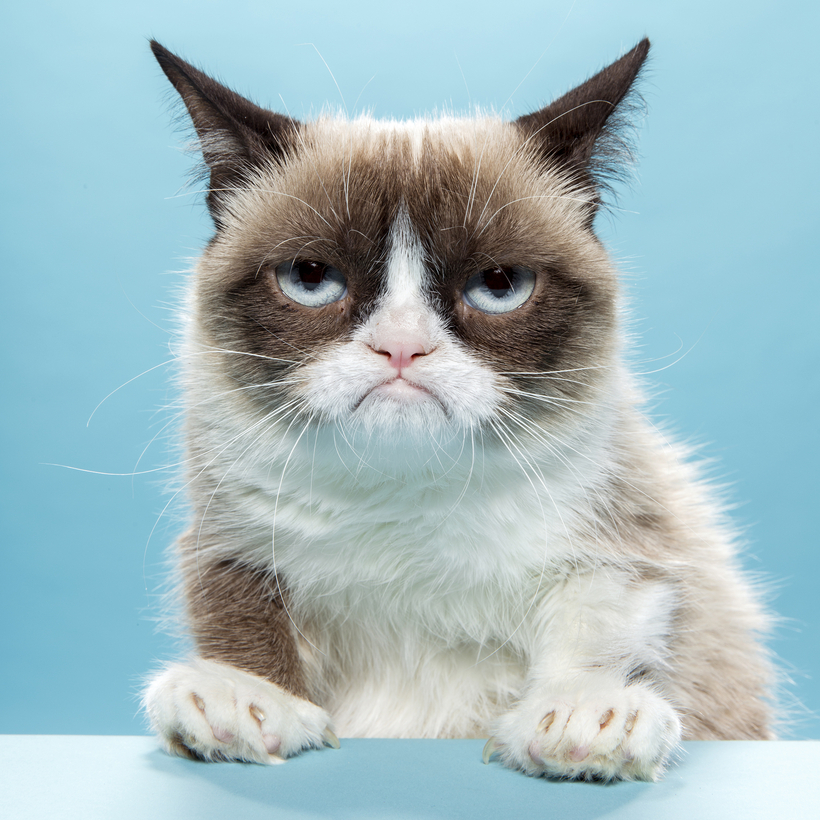On a recent Monday morning, Los Angeles talent agent Colleen Wilson was rolling calls with social-media influencers. “Yes, he should be wearing the vest during the hike,” Wilson confirmed before asking, “Are you O.K. with drone video?” Watson, the client in question, isn’t your typical influencer. He’s a golden retriever who went viral for doing trust falls—falling backwards into his owner’s arms. On Instagram and TikTok, he’s amassed over three million followers.
In 2015, Wilson, a 35-year-old former banker, started Pets on Q, a talent agency that represents cats and dogs around the world. Wilson’s core clients include 20 carefully picked animals, from a cat named Parker to a two-legged, wheelchair-bound Chihuahua.
“The animals are easy. It’s the humans that can get out of control,” says Wilson. “I’ve had to fire people for animal abuse. Others get blacklisted from the business for being really difficult to work with.” Offenses have ranged from owners inflating their pets’ social-media popularity by purchasing fake followers to demanding an animal get its own trailer stocked with kangaroo meat flown in from Australia.

As difficult as the owners can be, if an animal is big enough on social media, even the most outrageous demands will be met. Brands often pay five figures—or more—to be mentioned in a single social-media post from a popular pet. “There’s really no cap on what a sponsored post is worth,” says Ben Lashes, an agent and meme manager, which is someone who specializes in monetizing viral content.
In 2012, Lashes helped launch the career of the ultimate pet influencer, Grumpy Cat, after seeing the feline’s distinct permafrown on social media. Initially, people refused to believe that the cat’s pout—an underbite caused by feline dwarfism—was real. After Grumpy’s owners, Tabatha and Bryan Bundesen, set the record straight in a video, which quickly got more than one million views, Lashes asked the Bundesens for a meeting.
“There’s really no cap on what a sponsored post is worth.”
“We did appearances across the U.S. and Europe. Grumpy only went first-class, stayed in four-star hotels, and rode in limos or black cars,” Lashes explains. “Grumpy didn’t travel any other way—it was a deal-breaker.”
The cat, originally named Tardar Sauce, made millions from contracts with companies such as McDonald’s, Friskies pet food, and Cheerios. Grumpy went on to appear in TV shows and films, including the Lifetime movie Grumpy Cat’s Worst Christmas Ever. Her book, Grumpy Cat: A Grumpy Book, was on the New York Times best-seller list. By 2015, she had her own wax figure at Madame Tussauds.
Although Grumpy Cat died in 2019, she’s become commercially immortal. “Grumpy is the animal equivalent of an Elvis or Michael Jackson,” says Lashes, who takes the industry standard of 20 percent commission on all her deals. “We are developing an animated project and doing numerous licensing deals to this day.”

Lashes and Grumpy set the stage for pet influencers. Then the surge in pet adoptions during the coronavirus meant that fame-hungry people stuck at home could begin the side hustle of turning their pets into influencers. With a saturated market, competition soon became cutthroat. As one person in the industry tells me, cat people gained a reputation for being backstabbing and, well, catty. Dog owners are known for drama, traveling in exclusive packs.
According to one dog-influencer owner, the entire industry is cliquey. She suspects that jealous dog owners in her coterie are behind the mean anonymous comments on her dog’s sponsored Instagram posts.
What really infuriates her is the social climbing, which is rampant at dog birthday parties. The celebrations often come with multiple bouncy castles (for the dogs), catered pet meals, and party favors. When her dog, who has more than one million followers on Instagram, arrives, everyone tries to get their pup in a photo with him. “Then I have to give them all shout-outs on social media,” she says with a tone of disgust. “It’s not like my post would launch one of these other dogs’ careers.”

While many pets get their big break because of endearing imperfections—ears that are too large, a tongue that sticks out—as with humans, some influencers go viral for their perfect appearance. Take Coby the Cat, a British shorthair often called the most beautiful pet influencer. His baby blues have a thick, natural black liner around them. Coby, who is represented by Wilson, has even moved on to human beauty campaigns. With 1.8 million followers on Instagram, the feline stars in ads for Benefit Cosmetics and KVD beauty’s liquid eye liner. “It’s a natural segue for Coby,” says Wilson.
Becoming a pet influencer also takes a certain je ne sais quoi. An animal must possess characteristics that are instantly recognizable and, often, very human. “It’s just like Hollywood,” says Lashes. “Why does one person become a movie star, and another is stuck waiting tables the rest of their lives? You can’t explain the ‘It’ factor, but when you see it, you just know it.”
Susan Campos is a Los Angeles–based journalist and a former anchor for the Today show

